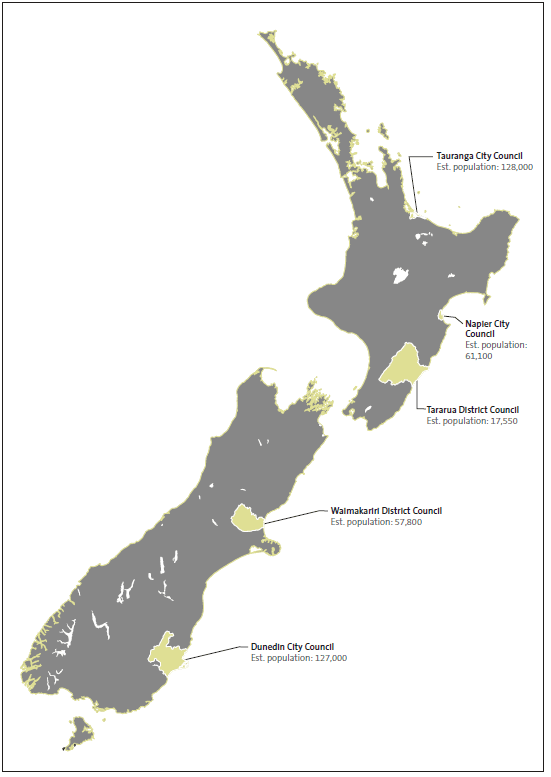Part 1: Introduction
1.1
Public assets, such as roads, footpaths, and drinking water supplies, support the provision of services to about 4.8 million people in this country. People expect these services to be safe and able to be used when they want and need to use them.
1.2
People also expect local authorities to manage the public assets that support these services well so that they are capable of continued operation.
1.3
Leaders of local authorities sometimes have to make difficult decisions that have widespread and lasting effects on their communities. Local authorities need to know which assets are the most important for delivering essential services. By identifying their most important assets, and directing resources towards gathering the right information about them, local authorities are better placed to make informed decisions about how to best manage those assets. A poor or incomplete understanding could lead to poor decisions with longer-term negative effects, including asset renewal planning that is not sustainable or achievable.
1.4
Given the importance of many public assets to people's lives, we considered it important to look at what local authorities were doing to gather, record, and retain information on their most important assets. In our recent work, we have reported on the importance of accurate and reliable asset information, and on the need for local authorities to better understand the condition of their assets. These include:
- Our high-level assessment of the 2015-45 infrastructure strategies in our November 2015 report, Matters arising from the 2015-25 local authority long-term plans, shows that more than half of the local authorities discussed the need to get better information about their assets.
- The need to gather and use the right information on asset condition has been reinforced in recent reviews and audits of local government entities, such as our reports, Managing the assets that distribute electricity (June 2017) and Managing public assets (June 2013).
- Our reports on water and roading asset challenges have also illustrated the importance of accurate and reliable asset performance information.
1.5
Our April 2017 report, Local government: Results of the 2015/16 audits, emphasised the importance of local authorities having a comprehensive understanding of assets:
A comprehensive understanding of the age and condition of critical assets, as well as of future demand (for example, increases or decreases depending on demographic changes or changes to environmental standards), is important in assessing whether the actual and planned expenditure is sustainably maintaining assets.
Once local authorities have a comprehensive understanding of their critical assets and the cost of adequately maintaining them, elected members can make informed decisions about managing their assets and have well-informed conversations with their communities about how to fund that cost or the consequences of not doing so.
What we focused on
1.6
For this report we focused on how local authorities were gathering, recording, and retaining asset information and how they were making it available within their organisation. We carried out our audit work at Tauranga City Council, Napier City Council, Tararua District Council, Waimakariri District Council, and Dunedin City Council (the five local authorities). We chose these local authorities because they are at different stages of improving the quality of their asset information and each face specific challenges. See Figure 1.
1.7
We did not look at how the five local authorities managed their assets. However, where it is relevant to the quality of their asset information, we do discuss some of the benefits and difficulties the five local authorities experienced in managing and planning for the eventual replacement of their assets.
How we did the work
1.8
We looked at whether the five local authorities gathered, recorded, and retained the asset information they needed and made it available to use to inform their asset management practices. We expected the processes for gathering, recording, and retaining asset information to be effective. We also expected there to be asset information available to inform the local authorities' asset management decision-making and their wider requirements.
1.9
We reviewed more than 300 documents provided by local authority staff and spoke to 36 people who worked at or with the five local authorities.
The structure of this report
1.10
In Part 2, we describe the five local authorities' approaches to defining their asset information needs. We also discuss why it is important that local authorities identify asset information needs that are relevant for future use and prioritised on the most important assets.
1.11
In Part 3, we discuss how the five local authorities supported gathering, recording, and retaining high-quality asset information.
1.12
In Part 4, we discuss how the five local authorities ensure that their asset information is made available to their decision-makers, including other teams that do not directly manage assets.
Figure 1
The five local authorities we looked at

Source: Estimated population as at 30 June 2016 from Stats NZ Tatauranga Aotearoa.

